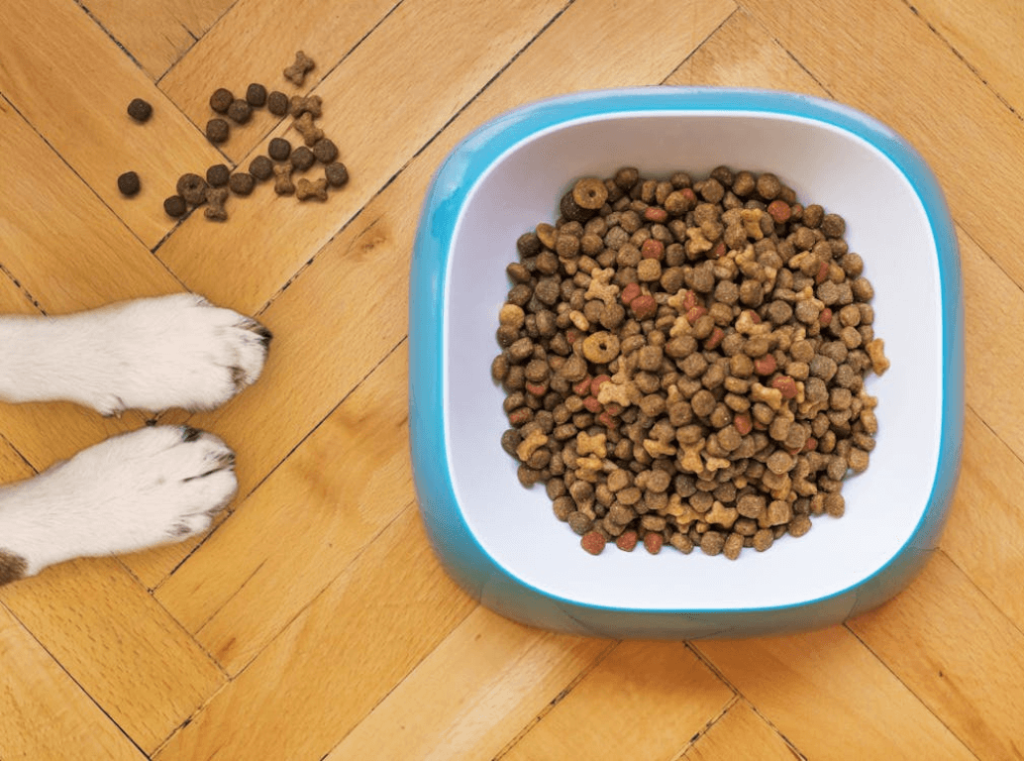How to Choose the Ideal Food for Your Pet

In the bustling world of pet ownership, it’s crucial to understand that choosing the right food plays a significant role in ensuring your pet’s health, happiness, and longevity. With shelves lined with a dizzying array of choices, from grain-free formulas to raw diets, pet owners often feel overwhelmed. However, by taking the time to understand your pet’s unique needs, you can make an informed decision that caters to their specific dietary requirements.
Key Factors to Consider
Understanding the fundamental factors that influence your pet’s nutritional needs can help in narrowing down your options. Here are some essential aspects to consider:
- Species: Dogs and cats are biologically different, leading to distinctly different nutritional requirements. For instance, while dogs are omnivores and can thrive on a variety of foods, cats are obligate carnivores, meaning they require a diet rich in animal proteins.
- Age: The life stage of your pet is crucial in determining their dietary needs. Puppies and kittens require higher protein and fat content to support their rapid growth and development, while adult and senior pets might need diets lower in calories to prevent obesity and manage age-related health issues.
- Health Conditions: Pets with specific health conditions such as diabetes, kidney disease, or allergies may require specialized diets to manage their health. Consulting with your veterinarian can provide crucial insights into suitable options.
Quality Ingredients Matter
When it comes to the nutrition of your pet, not all foods are created equal. Selecting brands that emphasize high-quality ingredients is essential for optimal health. Look for food that features:
- High-quality proteins: Ingredients such as chicken, beef, or fish should be listed at the beginning of the ingredient list, as they are vital for muscle development and overall vitality.
- Whole grains: Ingredients like brown rice or oatmeal provide a good source of energy and offer beneficial fiber that can aid digestion.
- Fruits and vegetables: Look for additions such as blueberries, carrots, or spinach, which are packed with essential vitamins, minerals, and antioxidants, contributing to a strong immune system.
Reading Labels
A key part of making informed choices involves understanding pet food labels. Pay close attention to:
- Ingredient lists: A well-balanced pet food should have more meat ingredients listed at the top. Avoid foods where by-products or fillers dominate the list.
- Nutritional adequacy statements: Ensure the product meets the standards set by the Association of American Feed Control Officials (AAFCO), which guarantees that the food has been evaluated for nutritional adequacy.
In conclusion, by delving into these factors, pet owners can equip themselves with the knowledge necessary to choose the perfect diet for their beloved companions. This conscious approach to pet nutrition will undoubtedly support their overall well-being and help you enjoy many joyful years together. Let’s embark on this fascinating journey into the world of pet nutrition and discover what truly nourishes our furry friends!

DIVE DEEPER: Click here to uncover more about holistic nutrition
Understanding Your Pet’s Needs
Before diving into the myriad of options available in the pet food aisle, it’s imperative to pause and assess your pet’s individual needs. Every animal is unique and requires a diet tailored to their specific biology, lifestyle, and health status. A thorough understanding of these elements is the first step toward making the best dietary choice for your furry friend.
Species-Specific Needs
One of the primary considerations when choosing pet food is the species of your pet. The nutritional requirements of dogs differ significantly from those of cats. For example:
- Dogs: As omnivores, dogs can consume a diverse range of foods, including meat, grains, and vegetables. Their diets can be more flexible, allowing for various formulations that maintain their health and energy levels.
- Cats: Conversely, cats are obligate carnivores, which means their diet must be heavily centered on animal proteins. They require specific nutrients found in meat that are vital for their survival, such as taurine, arachidonic acid, and certain vitamins.
Understanding these fundamental dietary distinctions can significantly narrow down your options when selecting the right food.
Life Stage Considerations
Another essential factor is the life stage of your pet. Just as humans have different nutritional needs at various ages, so do pets:
- Puppies and Kittens: These young pets are in a phase of rapid growth and development, necessitating a higher caloric intake with increased protein and fat levels to support healthy bones, muscles, and overall well-being.
- Adult Pets: Once they reach maturity, adult pets require a balanced diet that maintains their health without promoting obesity. Look for foods that offer a moderate caloric density and maintain essential protein levels.
- Senior Pets: As pets age, their metabolism may slow down, and their needs can change significantly. Senior diets are typically lower in calories but higher in fiber to aid digestion, along with key nutrients like omega fatty acids for joint health.
Paying attention to these life stages ensures that your pet receives the appropriate nutrients and aids in the prevention of health issues associated with dietary deficiencies or excesses.
Health Considerations
It’s crucial to consider any existing health conditions your pet may have when choosing their food. Just as with humans, certain health issues can require specialized diets:
- Allergies: If your pet suffers from food allergies or sensitivities, look for hypoallergenic options that eliminate common allergens such as grains, beef, or chicken.
- Chronic Conditions: Pets with chronic health conditions like diabetes or kidney disease may need diets formulated to manage their specific issues. Always consult with your veterinarian to determine the most suitable dietary adjustments for these pets.
By thoroughly assessing your pet’s species, life stage, and health considerations, you can make informed decisions that will lead to better health outcomes and enhance the quality of life for your cherished companion. Understanding these factors sets the groundwork for selecting a diet that not only meets their physical needs but also supports their overall emotional well-being.
| Category | Description |
|---|---|
| Types of Pet Food | Understanding the differences between dry, wet, raw, and homemade pet food is crucial. |
| Nutrition Balance | Adequate ratios of protein, fats, and carbohydrates are necessary for optimal health. |
| Ingredient Quality | Look for whole ingredients without fillers or artificial additives. |
| Age and Breed-Specific Needs | Different stages of life require tailored nutrition for optimal health. |
| Consultation with Veterinarians | Always seek professional advice to determine the best food for your pet’s needs. |
When embarking on the journey of selecting the ideal food for your pet, the landscape of choices can be overwhelming. Exploring the myriad of dietary options, including various formulations such as dry kibble, canned food, or fresh and raw diets, offers key insights into what may best suit your furry companion’s lifestyle. Each type has its unique benefits and potential drawbacks, making it vital to evaluate them in terms of your pet’s individual health requirements.Nutrition is another cornerstone of pet food selection. A thorough understanding of the essential components like proteins, fats, and carbohydrates can significantly impact your pet’s energy levels and overall wellbeing. Utilizing high-quality ingredients without unnecessary fillers or preservatives will further ensure that your pet receives the best possible nutrition. Additionally, specific needs often arise according to age, breed, and pre-existing health conditions. Some pets may benefit from specialized diets tailored for their circumstances, such as weight management or food sensitivities. Hence, consultation with a veterinarian is recommended to aid you in making an informed decision that aligns with your pet’s personal health journey. Engaging with reputable brands and informing yourself on industry standards will work wonders for your furry friend’s nutrition.
DIVE DEEPER: Click here to discover holistic nutrition for your pets
Decoding Pet Food Labels
Once you have a firm grasp on your pet’s needs, the next step is to explore the often-confounding world of pet food labels. Pet food packaging can be decorated with enticing images and bold claims, but it’s essential to differentiate between marketing jargon and genuine nutritional value. Understanding how to read these labels will empower you to make educated decisions that suit your pet’s dietary requirements.
Ingredients List
The ingredients list on a pet food package is typically the most telling aspect of the product. Ingredients are listed in descending order by weight. This means the first few ingredients hold the most significance in their nutritional contribution. When examining these:
- Protein Sources: Look for named animal proteins as the primary ingredient (e.g., chicken, beef, lamb). This indicates that the food is rich in the necessary building blocks for your pet’s muscles and overall health. Beware of vague terms like “meat by-products,” which can mask lower-quality ingredients.
- Carbohydrates: Grains and vegetables can provide energy, but be cautious with foods that list corn or soy among the top ingredients, especially if your pet has dietary sensitivities.
- Fats and Oils: Good fats are essential for skin and coat health. Look for sources like fish oil or chicken fat, which offer omega fatty acids that can promote overall wellness.
Prioritize foods with whole, recognizable ingredients while avoiding those with fillers or artificial additives. A healthy pet food will demonstrate a clear and concise list of ingredients, reflecting a commitment to quality.
Nutritional Adequacy Statement
Another critical component of the packaging is the nutritional adequacy statement, which indicates that the food meets the standards set by the Association of American Feed Control Officials (AAFCO). This statement can be a strong indicator of the food’s quality:
- Life Stage-Specific Formulas: Ensure that the food is appropriate for your pet’s life stage, whether it’s for growth, maintenance, or senior health.
- Feeding Trials: Some foods provide evidence of having undergone AAFCO feeding trials, which means the food has been tested for its adequacy, indicating a higher level of reliability.
Choosing food backed by AAFCO’s standards can provide peace of mind that you are feeding your pet a complete and balanced diet.
Types of Pet Food
The format of the pet food can also play a significant role in your pet’s dietary fulfillment. Pet food generally comes in three formats: dry, wet, and raw. Each has its benefits. For example:
- Dry Food: Kibble is convenient, cost-effective, and can contribute to dental health by reducing tartar buildup.
- Wet Food: Canned food often has higher moisture content, making it a great option for pets that may not drink enough water, beneficial for kidney health.
- Raw Diet: Some pet owners are gravitating towards raw diets, believing they emulate a natural diet. However, raw feeding requires careful handling and knowledge to prevent nutritional imbalances and bacterial contamination.
Evaluate your pet’s preferences, age, and any health considerations while deciding which food format to choose. Oftentimes, a combination of different types may provide the best balance of nutrition and palatability.
In navigating the complex choices of pet food labels, formats, and claims, developing an acute awareness can enhance your dog or cat’s health and set the stage for a vibrant, energetic life. A well-informed pet owner is key to fostering lasting health and happiness in their beloved animals.
DIVE DEEPER: Click here to discover positive training techniques
Final Thoughts on Selecting the Best Pet Food
Choosing the ideal food for your pet is not only a matter of taste but also one of health and longevity. As a responsible pet owner, the journey to finding the right diet requires diligence, research, and a keen understanding of your furry companion’s unique needs. Start by assessing their age, breed, weight, and any specific health concerns to ensure you’re on the right track to meeting their dietary requirements.
Recognizing the importance of deciphering pet food labels is essential; this knowledge helps distinguish high-quality ingredients from those that are less beneficial. By prioritizing protein sources, being cautious with fillers, and ensuring nutrient adequacy through AAFCO standards, you are empowered to make informed choices that support your pet’s well-being. Furthermore, understanding the different formats of pet food—dry, wet, and raw—allows for a tailored approach that caters to your pet’s preferences and health scenarios.
Ultimately, remember that your pet’s diet is a crucial element in shaping their overall lifestyle. By dedicating time to research and critically evaluate pet food options, you can contribute to a happy and healthy life for your beloved animal. Don’t hesitate to consult with a veterinarian for recommendations, as they can offer invaluable insights into your pet’s specific needs. Embrace the responsibility of making informed dietary choices, and watch your pet thrive with the ideal nutrition they deserve.



